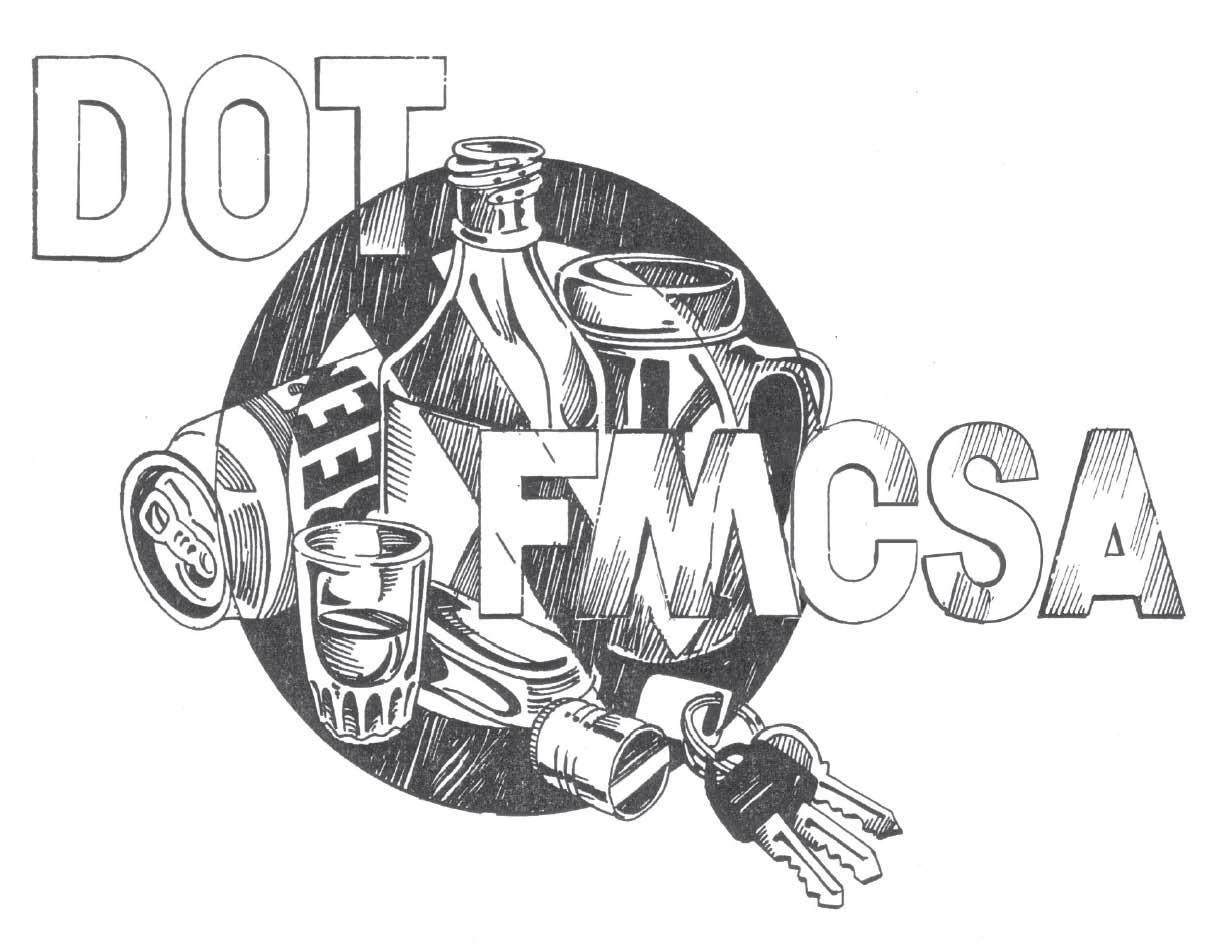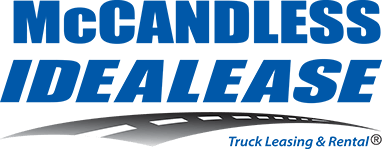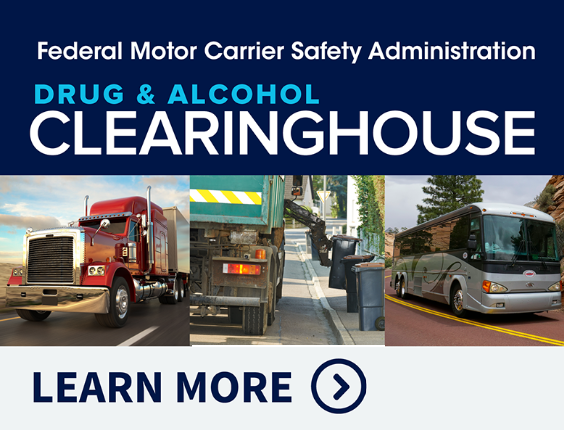Are You Sharing Your Driver with Another Company?
Read this weeks Safety Bulletin, "Are You Sharing Your Driver with Another Company?" Make sure you are subscribedto receive all of the latest Safety Bulletins! Download a PDF version to share!
Question: Does the Federal Motor Carrier Safety Administration address the use of a driver by multiple employers?
Answer: Yes, this situation is addressed in several ways throughout the regulations; however, it is confusing. Drivers that work part-time fall into several classifications:
1. Drivers that work for multiple employers regularly.
2. Drivers who are regularly employed by a motor carrier and occasionally drive for another motor carrier.
3. An employee of a non-motor carrier who occasionally or part-time drives.
Let's look at the driver qualification process:
Multiple Employer Drivers
Multiple-employer driver means a driver who, in any period of 7 consecutive days, is employed or used as a driver by more than one motor carrier. This definition applies to a driver who regularly works part-time for two or more employers.
Suppose a motor carrier employs a person as a multiple-employer driver (as defined in §390.5 of this subchapter). In that case, the motor carrier shall comply with all requirements of this part, except that the motor carrier need not:
- Require the person to furnish an application for employment under §391.21.
- Make the investigations and inquiries specified in §391.23 concerning that person.
- Perform the annual driving record inquiry required by §391.25(a).
- Perform the annual review of the person's driving record required by §391.25 or require the person to furnish a record of violations or a certificate under §391.27.
- Before a motor carrier permits a multiple-employer driver to drive a commercial motor vehicle, the motor carrier must obtain his/her name, his/her social security number, and the identification number, type, and issuing State of his/her commercial motor vehicle operator's license. The motor carrier must maintain this information for three years after employment of the multiple-employer driver ceases.
A driver who is regularly employed by a motor carrier and occasionally works for another motor carrier. §391.65(a) A motor carrier may employ a driver who is not a regularly employed driver of that motor carrier without complying with the generally applicable driver qualification file requirements in this part, if:
- The driver is regularly employed by another motor carrier; and the motor carrier which regularly employs the driver certifies that the driver is fully qualified to drive a commercial motor vehicle in a written statement which—
- Is signed and dated by an officer or authorized employee of the regularly employing carrier.
- Contains the driver's name and signature.
- Certifies that the driver has been regularly employed as defined in §390.5.
- Certifies that the driver is fully qualified to drive a commercial motor vehicle under the rules in Part 391 of the Federal Motor Carrier Safety Regulations.
- States the expiration date of the driver's medical examiner's certificate.
- Specifies an expiration date for the certificate, which shall be no longer than two years or, if earlier, the expiration date of the driver's current medical examiner's certificate; and a motor carrier that obtains a certificate under paragraph (a)(2) of this section shall:
- Contact the motor carrier which certified the driver's qualifications under this section to verify the certificate’s validity. This contact may be made in person, by telephone, or by letter.
- Retain a copy of that certificate in its files for three years.
A motor carrier that certifies a driver's qualifications under this section shall be responsible for the accuracy of the certificate. The certificate is no longer valid if the driver leaves the employment of the motor carrier which issued the certificate or is no longer qualified under the rules in this part.
An employee of a non-motor carrier who occasionally or part-time drives for a motor carrier:
A person who drives for one motor carrier (even if it is only one day a month) would not meet the definition of an intermittent, casual, or occasional driver. The motor carrier must fully qualify the driver and maintain a qualification file as a regularly employed driver.
With all that regulation said, it is still in the best interest of a motor carrier and the best liability protection to require all drivers, regardless of employment status, to complete a full qualification process with a complete file on each driver that operates a commercial motor vehicle.
How do drug and Alcohol testing regulations address a shared driver?
Keep in mind that Drug and Alcohol regulations apply to drivers that operate commercial motor vehicles over 26,000 lbs GVWR or are transporting HM in placard-able quantities or passengers.

Pre-employment testing: There is an exception to pre-employment testing found in CFR 382.301. However, there are many requirements for the exception, and basically, you are relying on the compliance of another motor carrier for your own compliance. As a better practice and your best liability protection, administer a Pre-employment Drug screen to all new drivers regardless of employment classification.
Random Testing: When a driver works for two or more employers, in whose random pool must the driver be included? Answer: The driver must be in the pool of each employer for which the driver works.
Clearinghouse: FMCSA FAQ Is an employer required to conduct pre-employment and annual Clearinghouse queries for drivers who are in a random testing pool regulated by another DOT agency?
Yes. An employer is required to conduct pre-employment and annual queries for all drivers subject to drug and alcohol testing under 49 CFR Part 382.
While the employee may perform more than 50 percent of their functions for a mode other than FMCSA, possibly placing the employee in that agency’s random pool, the Clearinghouse query requirements apply so long as the employee performs any FMCSA-regulated functions.
All other tests, post-accident, reasonable suspicion, and follow-up testing would apply as to any other CDL driver.
And finally, how do the Hours-of-Service regulations apply to shared drivers?
Drivers used by more than one motor carrier:
When the services of a driver are used by more than one motor carrier during any 24-hour period in effect at the driver's home terminal, the driver shall submit a copy of the record of duty status to each motor carrier. The record shall include:
- duty time for the entire 24-hour period.
- The name of each motor carrier served by the driver during that period; and
- The beginning and finishing times worked for each carrier, including a.m. or p.m..
Motor carriers, when using a driver for the first time or intermittently, shall obtain from the driver a signed statement giving the total time on duty during the immediately preceding seven days and the time at which the driver was last relieved from duty before beginning work for the motor carriers.
ELD Requirements in Canada Go into Effect on January 1, 2023
ELD Requirements in Canada Go into Effect on January 1, 2023. For U.S. companies operating trucks in Canada, new requirements for Electronic Logging Devices go into effect as of January 1, 2023. The rules require carriers to have an ELD that has been approved under the regulations of Transport Canada.
There are only 57 ELDs that have approval for use in Canada. In contrast, some 650 devices have been self-certified by their manufacturer for use in the United States. Thus, many ELDs on U.S. trucks may not be acceptable in Canada.
To confirm if your current device is compliant, you must verify the device name, model number, and software version. The last part is very important—some devices currently in use do not have updated software and therefore are not currently compliant. Companies should contact their ELD manufacturer to find out when it last was or will be updated and how this may change the operation of the system and its approval status under the Transport Canada requirements.

Managing Your DOT Random Testing
End-of-year holidays and vacations often throw a wrench into a motor carrier's plans to notify drivers of DOT random testing.
Carriers subject to 49 CFR Part 382 must meet the minimum annual testing rates, 50 percent for drugs and 10 percent for alcohol, by the last day of the year. With only a few weeks remaining in 2022, it is important to consider your last selection and the timing of notifications if you haven't already.
If a motor carrier procrastinates on scheduling tests, it may run into issues with increased deliveries over the holiday season, vacations, and company shutdowns.
*The Idealease Safety Bulletin is provided for Idealease locations and their customers and is not to be construed as a complete or exhaustive source of compliance or safety information. The Idealease Safety Bulletin is advisory in nature and does not warrant, guarantee, or otherwise certify compliance with laws, regulations, requirements, or guidelines of any local, state, or Federal agency and/or governing body, or industry standards.


